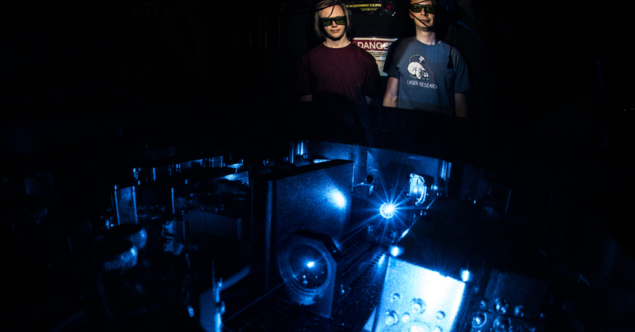
The ALPHA collaboration at CERN has reported the first measurements of fine-structure effects and the Lamb shift in antihydrogen atoms. The results, published in Nature in February, bring further scrutiny to comparisons between antimatter and ordinary matter, which, if found to behave differently, would challenge CPT symmetry and shake the foundations of the Standard Model.
In 1947, US physicist Willis Lamb and his colleagues observed an incredibly small shift in the n = 2 energy levels of hydrogen in a vacuum. Under traditional physics theories of the day, namely the Dirac equation, these states should have the same energy and the Lamb shift shouldn’t exist. The discovery spurred the development of quantum electrodynamics (QED), which explains the discrepancy as being due to interactions between the atom’s constituents with vacuum-energy fluctuations, and won Lamb the Nobel Prize in Physics in 1955.
Antimatter spectroscopy
The ALPHA team creates antihydrogen atoms by binding antiprotons delivered by CERN’s Antiproton Decelerator (AD) with positrons. The antiatoms are then confined in a magnetic trap in an ultra-high vacuum, and illuminated with a laser to measure their spectral response. This technique enables the measurement of known quantum effects such as the fine structure and the Lamb shift, which have now been measured in the antihydrogen atom for the first time. The ALPHA team previously used this approach to measure other quantum effects in antihydrogen, the most recent being a measurement of the Lyman–alpha (1S–2P) transition in 2018.

The splitting of the n = 2 energy level of hydrogen is a separation between the 2P3/2 and 2P1/2 levels in the absence of a magnetic field, and is caused by the interaction between the electron’s spin and the orbital momentum. The classic Lamb shift is the splitting between the 2S1/2 and 2P1/2 levels, also in the absence of a magnetic field, and is the result of the effect on the electron of quantum fluctuations associated with virtual photons.
The work confirms that a key portion of QED holds up in both matter and antimatter
Jeffrey Hangst
In its new study, the ALPHA team determined the fine-structure splitting and the Lamb shift by inducing transitions between the lowest (n = 1) energy level of antihydrogen and the 2P3/2 and 2P1/2 levels in the presence of a 1 T magnetic field. Using the value of the frequency of a previously measured transition (1S–2S), the team was able to infer the values of the fine-structure splitting and the Lamb shift. The results were found to be consistent with theoretical predictions of the splittings in normal hydrogen, within the experimental uncertainties of 2% for the fine-structure splitting and 11% for the Lamb shift. “The work confirms that a key portion of QED holds up in both matter and antimatter, and probes aspects of antimatter interaction – such as the Lamb shift – that we have long looked forward to addressing,” says ALPHA spokesperson Jeffrey Hangst.
The seminal measurements of antihydrogen’s spectral structure that are now possible follow more than 30 years of effort by the low-energy antimatter community at CERN. The first antihydrogen atoms were observed at CERN’s LEAR facility in 1995 and, in 2002, the ATHENA and ATRAP collaborations produced cold (trappable) antihydrogen at the AD, opening the way to precision measurements of antihydrogen’s atomic spectra. In addition to spectral measurements, the charge-to-mass ratios for the proton and antiproton have been shown to agree to 69 parts per trillion by the BASE experiment, and the antiproton-to-electron mass ratio has been measured to agree with its proton counterpart to a level of 0.8 parts per billion by the ASACUSA experiment. The newly completed ELENA facility at the AD will increase the number of available antiprotons by up to two orders of magnitude.
Next for the ALPHA team is chilling large samples of antihydrogen using state-of-the-art laser cooling techniques. “These techniques will transform antimatter studies and will allow unprecedentedly high-precision comparisons between matter and antimatter,” says Hangst.





